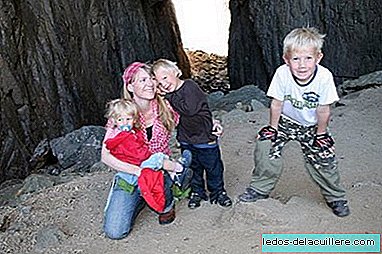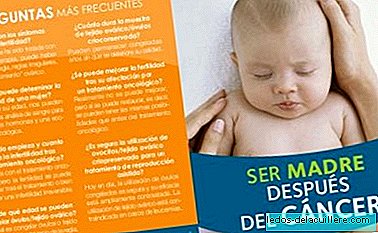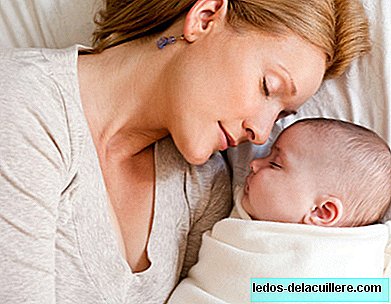
The foundation Save the Children recently published the report on The state of women in the world, in which various issues about the life of women are valued and in which it is stated that Norway is the best country to be a mother (and probably the best country for women).
Norwegians show in this report that they take into account the children and the possibility of reconciling work and family, since women have a maternity leave of up to 56 weeks (16 in Spain) and also stands out for the educational level of women, low infant mortality, a high fertility rate and few salary differences between women and men.
With regard to maternity leave, a Norwegian woman can choose a 46-week leave, receiving 100% of the salary or a 56-week leave, charging 80%. Men, meanwhile, are entitled to 10 weeks charging 100% of their salary (compared to 15 days in Spain). If with this you are getting long teeth, keep reading, there is still more.
Social policies designed for motherhood and equality
In 2008 Norway broke records for the construction of kindergartens and since 2009 a place is guaranteed by law. For this reason, 90% of children aged one to five attend a kindergarten, whether public or private, with a maximum cost of 280 euros.
With these policies, the country ensures fertility rates that ensure generational replacement, preventing the country from aging. Every action they take is studied to assess what they get. For example, one of the studies shows that when the father takes parental leave with his first child the chances of having a second are higher. Last year 3 out of 5 parents were 6 or more weeks of paternity leave and 61,000 children were born, which is the highest figure in the country since 1972.
The social alarm that made everything begin to change rang in 1977. The woman began to work (years ago), children went to school with house keys, homes required two salaries and employment was incompatible with parenting. There were no nurseries and you had to choose between working or caring for the family and therefore fertility declined alarmingly reaching almost 1.5 children per couple. At present it is situated in almost two children on average, second only to France, Iceland and Ireland. In Spain we have a rate of 1.4 and it does not seem to sound too many alarms.
In 1986, Prime Minister Gro Harlem Brundtland appointed a government with 44% women. Since then it has not dropped 40% and Save The Children consider this as a point in favor, since Thus, measures related to gender equality and maternity are always present among the leaders. In Spain, women make up 37% of the government, however (and this is my perception), they do not seem to work too hard for a better work and family reconciliation.
Absolute equality is impossible.
However, there are things that, socially, remain as before and continue to show that absolute equality is, for the moment, difficult to achieve. It is true that in Norway, women account for almost half of the workers (47%), there is little unemployment and there are more university students than university students, but motherhood continues to be a point where inequality becomes more or less evident.

Women's work focuses on 69% in the public sector. If we look at, for example, the number of engineers working, only 12% are women, compared to 97% of nursery and school teachers. In addition, 43% also have part-time employment compared to 13% of men. We can say that When the woman has children, she begins to work part-time while the man begins to devote more hours to work.
Over time, when the now students grow and work it is very possible that the type of work between men and women will be more similar. However, it is clear that the difference will always exist for a reason: Women can be mothers and men cannot. Women have a maternal leave 5 times longer than that of men and this also creates a difference and, more importantly, it must be borne in mind that many couples choose to have one of them work part-time to take care of children and usually it is the woman who wants to do it or they both decide to do so (come on, that is not always a must).
High taxes
And how could they have these policies? You may ask. Very simple, paying a lot of taxes. Norway is one of the countries where more taxes are paid, however citizens usually pay them at ease, because they observe that their money is returned in the form of social benefits (and even economic, since, for example, they charge 120 euros per month per child, until they turn 18).
Breastfeeding is the majority and very different births
In Norway, breastfeeding is almost a matter of state. Mothers live it as something normal, something they simply have to do. Already in the hospital the mothers receive instructions and help to be able to do it successfully, even a video in the rooms explains how, why and until when to breastfeed.

The midwives, who receive the name of jordmor, a word that unites the concepts of mother and earth, only 70% of births attend, with about 3 per 100 births (1.3 in Spain, less than half).
The pain of childbirth is attempted to calm in a hot tub or with acupuncture, trying to avoid the epidural, which 24% of women end up using. The episiotomy is performed on 9 out of 100 women. Caesarean section is not an option, but an emergency choice. The cesarean section rate is 17%, about 15% that WHO considers normal (Spain has a 22% ratio in public hospitals and 36.6% in private hospitals). Curiously, or maybe not so much, Infant mortality is among the lowest in developed countries.
And Spain?
Spain is ranked number 13 of the 43 developed countries evaluated, since it is not bad, despite differing much from what happens in Norway (I do not want to imagine what happens in those who are worse positioned).
However, I doubt that we will improve this position (in fact, last year we were in position 11), because I doubt very much that the country moves towards policies that value the raising of children and the reconciliation of work with the family. In order for a government to change direction, the people must first change and, in a country where the necessary signatures for a six month maternity leave are not obtained, where maternity assistance is ridiculous or where the ministers do not manage to exhaust their maternal leave , motherhood seems to be relegated to the background.












